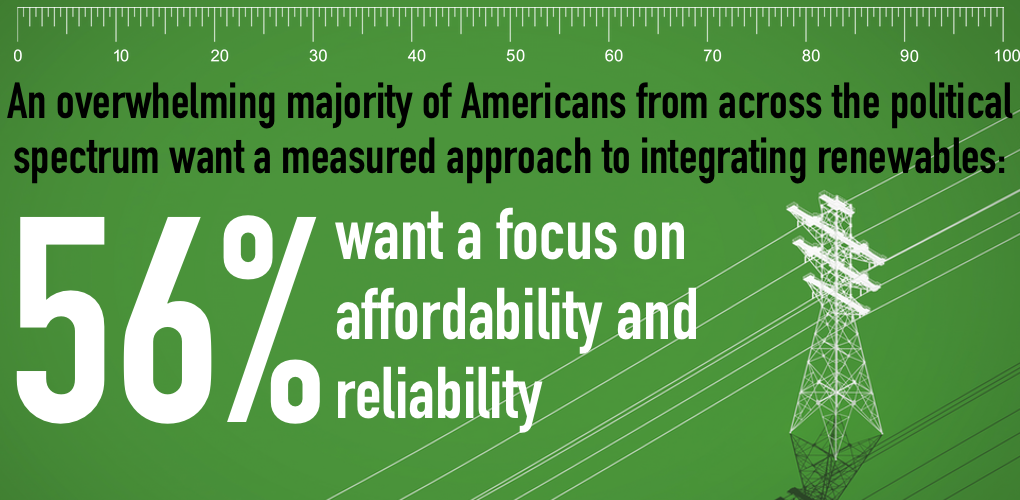
Affordability and Reliability First
In a nation that holds polarizing views on nearly everything, it’s telling when a poll returns decisive, bipartisan consensus on an issue. That’s precisely the case in a new poll from Morning Consult which asked Americans how they believe the current transformation of the grid should be approached. Asked if they would like to transition to a renewables-based grid as quickly as possible or rather take measured steps to achieve a balance of fuel sources, just 25 percent of Americans responded that they want a fast transition to renewables. Fifty-six percent of Americans want a more measured approach with a focus on affordability and reliability, with 19 percent preferring neither option.
An overwhelming majority of Americans from across the political spectrum want to proceed with caution. This is particularly interesting because in many states they’re getting just the opposite. Renewable portfolio standards are growing more ambitious. A growing number of states and utilities are pledging rapid and complete transitions to emissions-free power mixes even if they aren’t sure how to get there, or if the technology that would make such pledges feasible isn’t yet commercially viable.
It’s clear that the affordability of our power supply, along with the reliability of the grid, still remain decisive energy concerns. While some politicians push the fairytale that the nation can transition to renewables tomorrow and preserve affordability and reliability, Americans aren’t buying it – and for good reason.
More Expensive, Less Reliable Power
As we recently discovered, the suspicion that renewable portfolio standards increase electricity prices was soundly confirmed by new research from the University of Chicago, which found that these standards increase power costs through expanded spending on backup generation, transmission infrastructure required by renewables and through stranded assets. And time and again, Americans see that traditional baseload power sources, particularly coal plants, must come to the rescue when the weather deteriorates. Dependability matters. Who can blame voters for preferring caution to the extremism of the Green New Deal?
Americans’ preference for energy judiciousness aligns with exactly what we’re hearing from energy experts. The challenges of ramping up our dependence on intermittent wind and solar power remain immense. Wind and solar generated less than 10 percent of the nation’s electricity last year. Yet, there’s no shortage of evidence that these variable sources of power are placing great stress on the grid and in some cases actively undermining reliability.
While renewable boosters love to point to the falling costs of solar panels and wind turbines, or the emergence of a handful of grid-scale energy storage projects, as evidence that this transition is going to get easier, the smart money says it’s only going to get harder. California is a case in point.
As California’s reliance on solar power continues to grow, the seasonal challenges of integrating so much variable power are becoming more extreme. For considerable chunks of the year, California’s solar capacity is producing too much electricity when it’s not needed, leading to expensive curtailment and an ever-steeper duck curve, or it’s not producing nearly enough. During winter months, California can count on just a fraction of its solar capacity. These variability issues are much the same for wind generation. New research from the Energy Futures Initiative, a think-tank led by former Energy Secretary Ernie Moniz, found that in 2017 California went 90 days with little or no wind generation. This included several gaps when wind generation wasn’t available for multiple days; a problem that can’t be solved with batteries that can store just a few hours of power.
California’s politicians may have the appetite for subjecting their voters to an energy lab experiment, but make no mistake, it’s already coming with real costs. As The Wall Street Journal has pointed out, electricity prices in California are already by far the highest in the western U.S. – they’ve jumped 25 percent since 2013 and are poised to rise even further.
Americans need not be intimately familiar with California’s grid challenges to want moderation in managing the growth of variable wind and solar power. A balanced, reliable and affordable grid remains the preferred path. That may not be the story on the New York Times opinion page, but it’s firmly the opinion of American voters.
- On May 8, 2019
